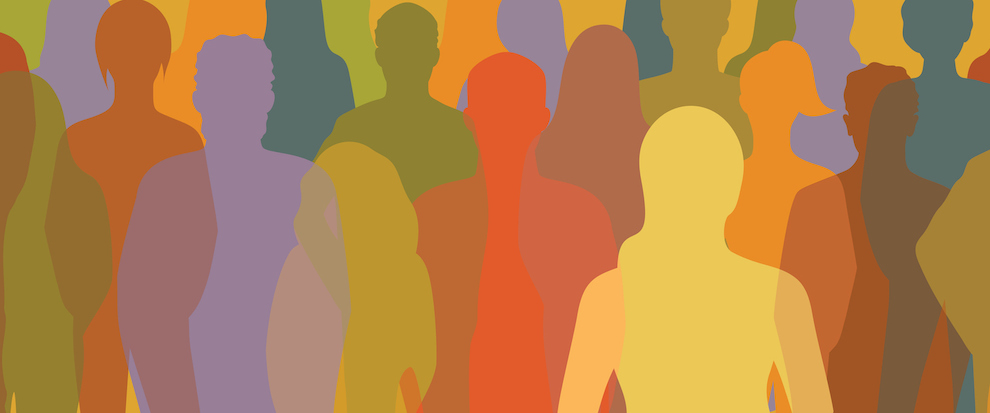How has collaboration at work evolved?
Editor’s note: Alexandra Webster is market research manager, Microsoft.
The pandemic left an indelible mark on the world of work, as employers and employees were challenged with maintaining continuity while discovering new ways of working. Collaboration became a key topic as the ecosystem experimented with radical change. As a result, we are living through an unprecedented shift in work patterns toward a more flexible, hybridized and empathetic mode of working.
Often in the business world, we use certain words, terms or ideas differently than they are used in non-business contexts. When people mention the term “collaboration,” what are they really talking about? How does collaboration relate to work? Is it a positively oriented term or is it seen as negative? How did collaboration evolve throughout the pandemic and what does it mean in a post-pandemic world?
As the meaning of collaboration shifted, the Social Intelligence Practice (SIP) team, within the Research + Insights organization at Microsoft, sought to find out why. We analyzed three million conversations around the term collaboration on various social media platforms. We compared how people related to the term over the arc of the pandemic to answer these questions and understand why the shift matters – from its impact on how we work to how it might change the way we market products and address customer needs.
Social semiotics methodology
The team was able to study this through an exclusive and innovative Microsoft SIP methodology called social semiotics, which we applied to a machine learning model to obtain our results.
In addition to looking for the term collaboration, we also aggregated similar words that imply collaboration, such as “working together,” “working as a team” or “co-working.” We then looked at the similarities of posts in relationship to one another and distilled the organic context within which those conversations took place.
The value in looking at semiotics from a social perspective is that we can pull every mention of a term across every audience group. We take the context of individual posts and look at similarities across them to reveal how people are using the term across the landscape. We then group the terms into top-level topics.
Each topic has a distinct meaning and context that can then be broken down further into its subtopics for deeper understanding. This allows us to uncover how the social ecosystem is using these terms and compare it to how we use it in a business context.
We can then apply a time filter to the data to see which topics are present in one time period vs another and whether the associations of the term have changed. We can also see from a rate perspective whether the association grows quickly or slowly.
Key findings on collaboration
In the pre-pandemic period, collaboration was more of an abstract, holistic concept that was community-centric with the goal of working together for the greater good.
Pre-pandemic:
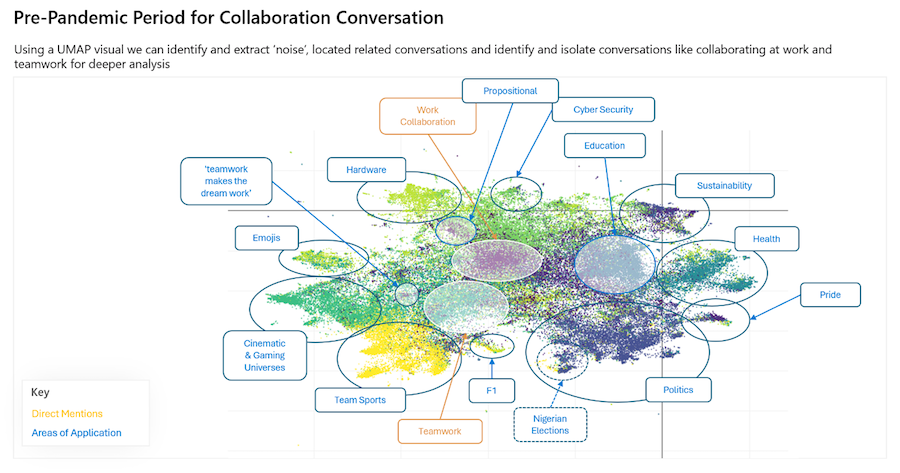
When collaboration is mentioned during the pandemic, it becomes more oriented toward work.
During the pandemic:
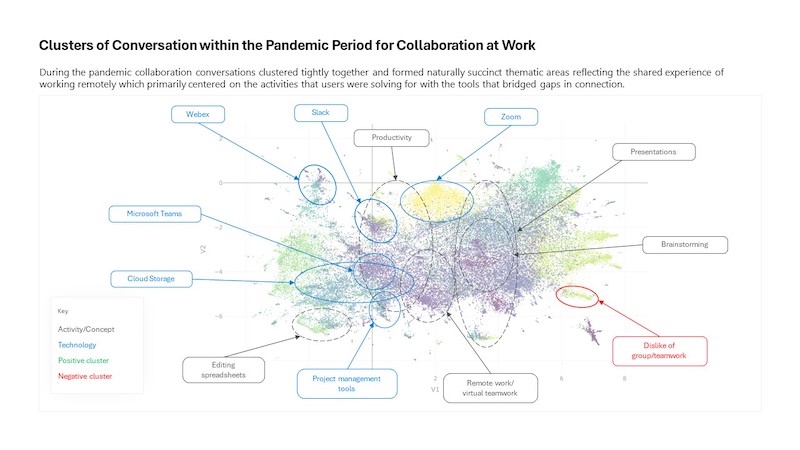
As we move to the post-pandemic period, the experience of collaborating becomes more diversified. People are now working across different spaces and time zones as we balance multiple working styles; remote, hybrid and in-office full-time. We can see as the conversation spreads the density becomes thinner because there is a diversification of need across the business.
Post-pandemic:
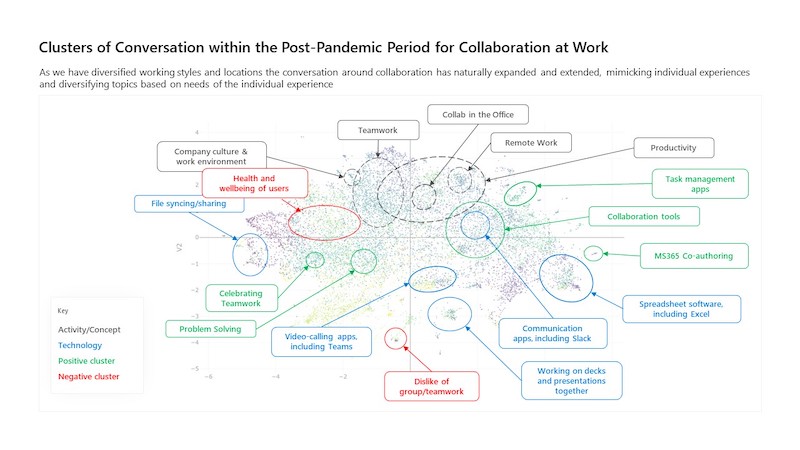
How is collaboration applied to work?
During the pandemic, the need for collaboration focused on the ways people worked and how to adapt. Relational terms were much more oriented toward, “How do we enable collaboration now that we are remote?”
As we moved into the post-pandemic period, collaboration became a marriage of technology and culture. The focus centered around how collaboration could be used to build teams and team culture and the deep integration of technology.
Collaboration today is more strongly associated with the practical application of work than before the pandemic, when collaboration was a more abstract concept.
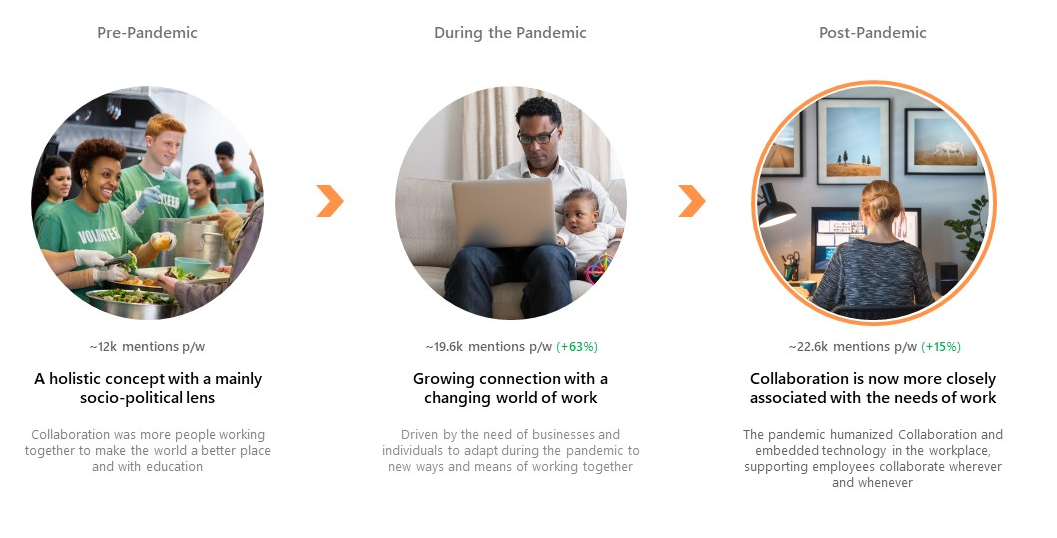
Over time, collaboration became increasingly humanized, aligning with a wider shift toward more flexible and inclusive working styles and applications.
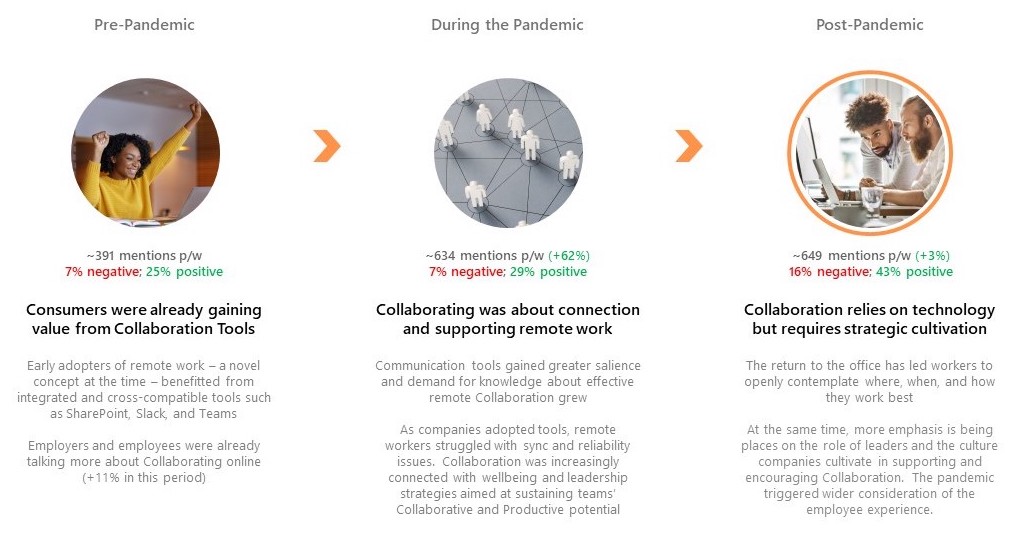
Positive vs. negative associations with the word “collaboration”
When looking at positive vs. negative sentiment around “collaboration,” we found conversations became increasingly more positive during and post-pandemic. There was also a minority of people who simply disliked collaborating with others in general or posted negatively about collaboration because they were resisting strict return-to-work policies. However, the positive far outweighed the negative.
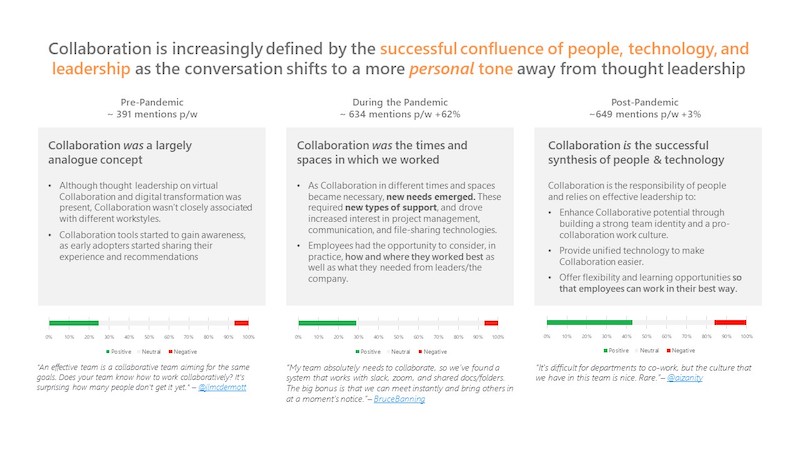
Where and how we collaborate
After we identified that collaboration at work was mentioned more in post-pandemic conversations, we sought to look at the subthemes that emerged and what drove them. Collaboration became about enabling productivity at work, its role in work culture and the necessity of tool integration.
Where: The assumption was made that people wanted to be back in the office after this time of isolation, however, that wasn’t the case. The majority of workers preferred remote work.
High negativity was shown where people were entering moments of location-based frustration. These people were having trouble connecting and collaborating online because the people who were in-office weren’t open to collaborating with those out-of-office. Or those who did go into the office expressed that there weren’t enough people there to collaborate with. High negativity was also shown for those who were being forced to return to the office. These people expressed that they did just fine collaborating remotely.
However, people also discussed how collaborating in person increased productivity because there was an ability to answer questions and solve problems in real time as opposed to waiting for answers over email or chat. They also cited how collaboration improved work culture, was useful for team building exercises and helped everyone focus on the same outcome.
How: Users looked for seamless integration that enabled them to collaborate across space and time. This was a major driver. For technology to meet users' needs and reduce frustration, we need to consider how to best enable a seamless suite of collaboration tools across devices, platforms and operating systems. Tools like Microsoft 365 were mentioned because of the ability to share documents across multiple platforms, enabling quick collaboration. When these tools did not work as expected, users became frustrated, leading to negative comments.
Impact: more reliable data
The beauty of social intelligence is in the verbatim comments. Social intelligence allows us to find the organic context in which a term is mentioned and break down what’s driving those conversations for better understanding. This allows us as marketers and researchers to connect to how people are using language in conversation, identify differences in usage, and uncover pain points or passions we can address with our products and solutions.
We can use the social semiotics methodology at any point in time, we can compare across time and we can amass and organize vast amounts of information. Compiling three million different sets of data points to arrive at our conclusions enabled us to analyze data at unprecedented scale, in a way we could never have achieved from surveys or interviews.
Social semiotics allows us to capture sentiment in real time, in the wild, without ever posing a question. Because we’re capturing this information organically, it removes any research bias, so the data is more reliable.
